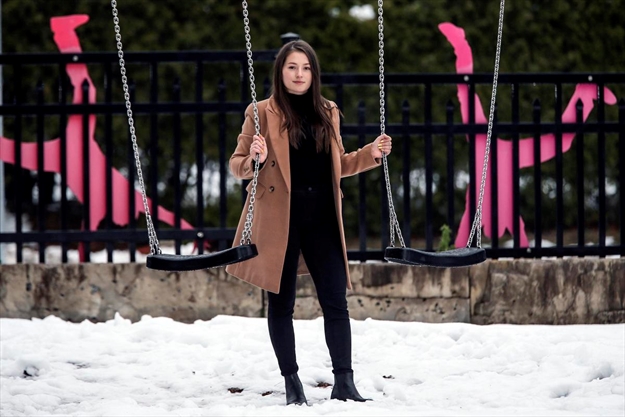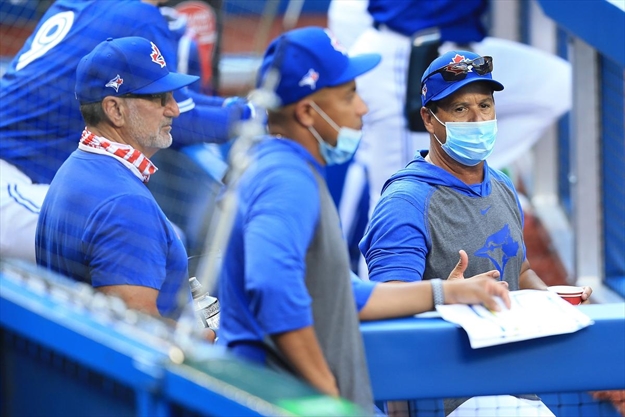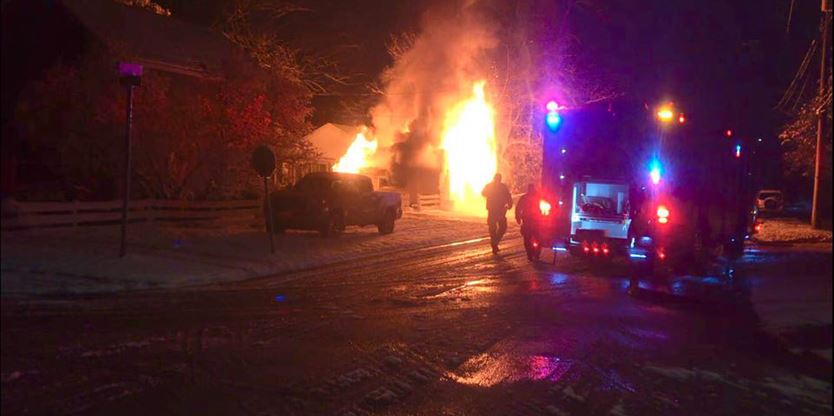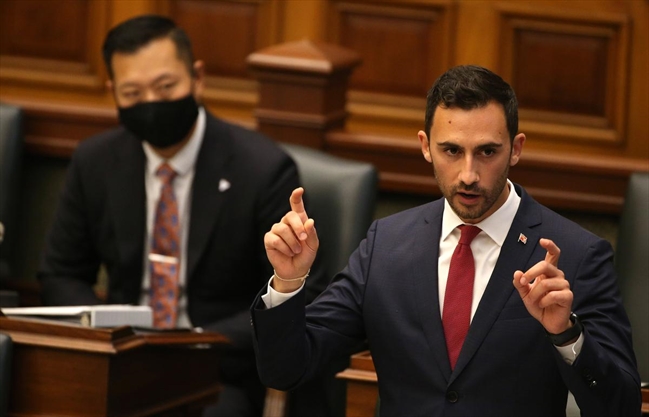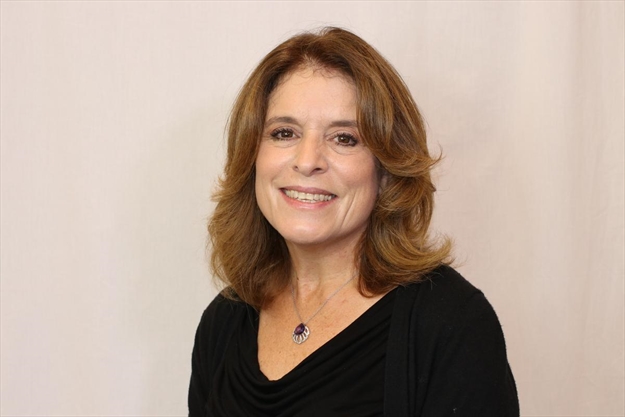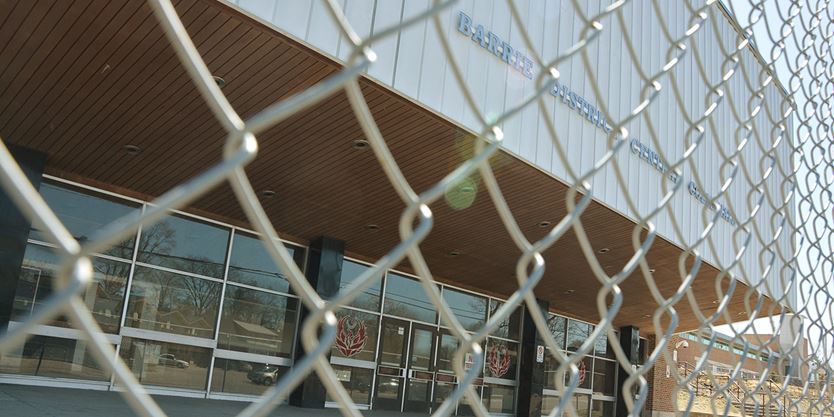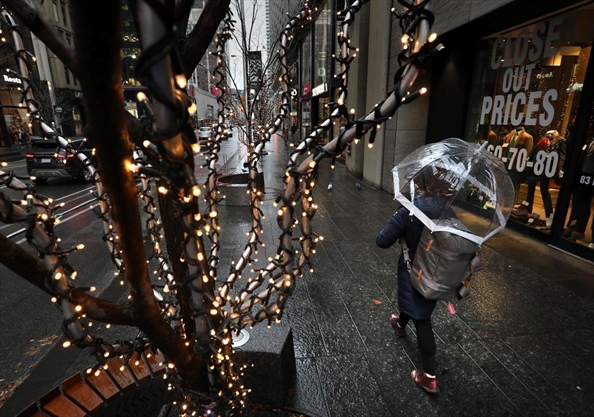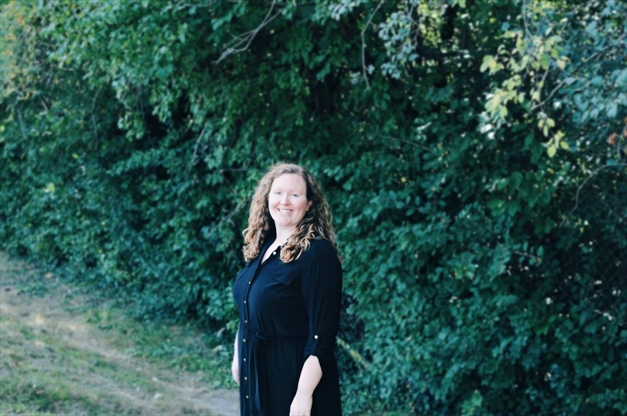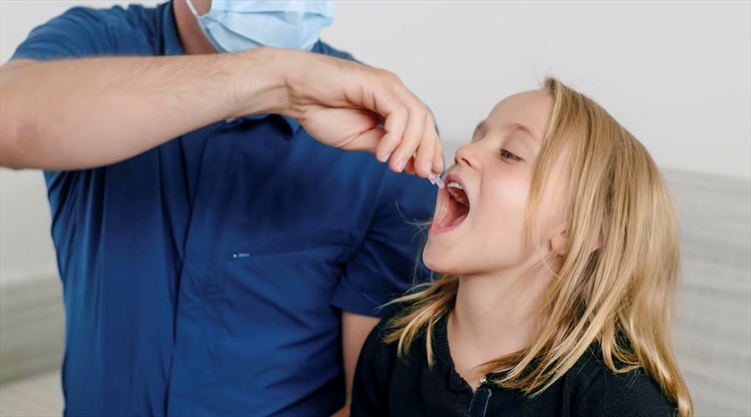This file is no longer being updated. Follow the latest developments .
5:41 p.m. There have been 358,144 confirmed cases of COVID-19 in Canada, according to The Canadian Press, including 11,883 deaths, and 285,194 that have been resolved.
This breaks fown as follows (NOTE: The Star does its own count for cases in Ontario; see elsewhere this file.):

- Quebec: 138,163 confirmed (including 6,984 deaths, 119,727 resolved)
- Ontario: 111,216 confirmed (including 3,595 deaths, 94,366 resolved)
- Alberta: 53,105 confirmed (including 519 deaths, 38,369 resolved)
- British Columbia: 29,973 confirmed (including 384 deaths, 19,998 resolved)
- Manitoba: 15,632 confirmed (including 280 deaths, 6,487 resolved)
- Saskatchewan: 7,691 confirmed (including 44 deaths, 4,384 resolved)
- Nova Scotia: 1,257 confirmed (including 65 deaths, 1,078 resolved)
- New Brunswick: 477 confirmed (including seven deaths, 356 resolved)
- Newfoundland and Labrador: 331 confirmed (including four deaths, 296 resolved)
- Nunavut: 159 confirmed (including eight resolved)
- Prince Edward Island: 70 confirmed (including 68 resolved)
- Yukon: 42 confirmed (including one death, 29 resolved)
- Northwest Territories: 15 confirmed, all of which have been resolved
- Repatriated Canadians account for 13 confirmed cases, all of which have been resolved.
2:54 p.m.: Saskatchewan is reporting four more people have died from COVID-19 and says there are 329 new infections in the province.
Health officials say those who died were 70 and older.
The Ministry of Health reports the seven-day average of daily cases sits at 268.
There are 111 people in hospital and 16 receiving intensive care.
As of Friday, no team sports are allowed in the province and capacity at public venues like churches, movie theatres and casinos is limited to 30 people.
The measures are part of the latest round of restrictions Premier Scott Moe announced earlier in the week to stem the virus’s spread while avoiding a second shutdown of non-essential businesses.
2:40 p.m.: Premier Doug Ford spent much of Friday’s briefing looking forward to the day when an anti-COVID vaccine might be available. Former chief of national defence staff Gen. Rick Hillier will oversee a distribution task force, Ford said, as he called on the federal government to provide details as soon as possible about the doses the province can expect.
“We need a clear line of sight into the timelines of the shipments,” Ford said.
Several hospitals have now experienced outbreaks, including a major facility in London, Ont. Grand River Hospital in Kitchener, Ont., became the latest hit after three patients and two staff tested positive.
The facility said it had closed its clinical teaching unit to new patient admissions and was pondering whether to close one of its eight operating rooms. It also said it was suspending in-person visits in favour of virtual connections.
2:26 p.m.: Public health officials say the COVID-19 outbreak linked to Nipissing University’s athletic community has grown to 16 cases.
The outbreak was first declared on Tuesday when six people tested positive for COVID-19.
North Bay Parry Sound District Health Unit did not say how many were students or staff.
The health unit says the growth in cases is expected as high-risk contacts are tested.
It says close contact tracing has been completed for positive cases.
The health unit had said that the individuals interacted with other people at the university’s gym and at social gatherings in the community.
2 p.m.: New Brunswick is reporting 12 new cases of COVID-19 on the day it formally pulls out of the Atlantic bubble.
Health officials said today the province has 114 active cases of the disease linked to the novel coronavirus.
Seven of the new cases are in the Saint John area, three are in the Moncton region and two are in the Fredericton area.
Officials say the cases in Saint John involve three people in their 20s and four people in their 30s, while the three cases in Moncton involve two people in their 50s and one person in their 60s. Fredericton’s cases involve two people in their 60s.
All three affected health regions are under the heightened “orange’’ pandemic-alert level and Dr. Jennifer Russell, chief medical officer of health, says there shouldn’t be any non-essential travel in and out of these zones.
New Brunswick announced Thursday it would withdraw from the so-called Atlantic bubble, which allowed the region’s residents to cross into the four Atlantic provinces without having to isolate for 14 days.
1:57 p.m.: Nova Scotia is reporting nine new cases of COVID-19, all in the central health zone, which includes Halifax.
The province now has 119 active cases of novel coronavirus.
Health officials say one new case identified today is at Bedford South School, which is a pre-primary to Grade 4 school in the central zone.
Starting today, ongoing voluntary testing is being introduced to monitor, reduce and prevent the spread of COVID-19 in long-term care.
1:10 p.m.: The Manitoba government plans to provide a wage top-up to people who work in group homes, homeless shelters and personal care homes as the spread of COVID-19 continues.
Families Minister Heather Stefanson said the $35-million wage support program is to provide an extra $5 an hour to about 20,000 front-line workers for two months.
“We need them now more than ever,” she said Friday.
Only workers making less than $25 an hour can apply.
There’s been a surge of COVID-19 cases in Manitoba over the last few months and the province has brought in significant restrictions, including mandated masks in indoor public spaces and the closure of restaurants and bars.
Stefanson said widespread community transmission has meant that COVID-19 is now making it’s way into vulnerable populations. There has been an increase of infections in homeless shelters, group homes and other services, she said, and it is putting stress on front-line staff.
“Our homeless shelters are also experiencing staff shortages due to positive cases and we are seeing the virus spread into our child and family services group care homes,” Stefanson said.
She did not provide numbers of infections in these facilities or populations, but said that as of Thursday there were infections among workers and participants in 16 disability service agencies.
Employees who are unable to work due to a COVID-19 infection or are waiting for test results will not receive the money. Stefanson said she does not believe it will incentivize people to work while sick.
Half the cost of the program comes from federal COVID-19 funding.
1:02 p.m.: Prime Minister Justin Trudeau pushed back against critics of his government’s COVID-19 vaccination plan with assurances most Canadians .
He also acknowledged the public’s eagerness to know when those efforts might begin, but said what matters most is the “finish line.”
Trudeau said most citizens are expected to be vaccinated by September 2021, and it was important to make sure this was done as safely as possible.
Deputy chief public health officer Dr. Howard Njoo has suggested he hoped to see most Canadians vaccinatedby the end of next year, but this is the most specific the Liberal government has been.
Njoo later said the Prime Minister’s prediction is “in the same ballpark” as previous rollout plans, and said September was a good target to work towards.
12:51 p.m.: Newfoundland and Labrador is reporting four new positive cases of COVID-19, for a total of 31 active cases across the province.
One of the individuals is a man in his 60s in the eastern region of the province whose infection is related to another identified case.
A man and a woman in their 50s in the eastern region and a woman in her 40s in the western region have also tested positive.
The source of those three infections is under investigation.
12:48 p.m.: New Brunswick is reporting 12 new cases of COVID-19, bringing its number of active cases to 114.
Public Health says seven cases are in the Saint John area, three are in the Moncton region and two are in the Fredericton area.
All three health regions are under the province’s heightened “orange’’ pandemic alert level.
Dr. Jennifer Russell, the province’s chief medical officer of health, says there should be no non-essential travel in and out of these zones.
12:45 p.m.: The Calgary Zoo says two giant pandas are on their way home to China today.
The zoo said in May that it would be sending the pair back early because the COVID-19 pandemic was making it difficult to source bamboo.
The plant makes up 99 per cent of the animals’ diet and the zoo has said it was an expensive and all-consuming effort to cobble together supplies from across North America.
The zoo says on Twitter it was a difficult decision to send the pandas home three years earlier than planned.
It says it took months of hard work to secure international permits to get the pandas home.
The zoo posted photos of reams of paperwork needed for the journey, the crates that were to carry the pandas and the Lufthansa Cargo plane that was to take them to China.
The two adults, Er Shun and Da Mao, were on loan from China to Canadian zoos as part of a 10-year deal signed in 2012. They were to stay in Calgary until 2023.
Two cubs, Jia Panpan and Jia Yueyue, were born in Toronto in 2015. They were sent to China as planned in January.
The price tag to have the pandas in Calgary was around $30 million, including $14.4 million for the Panda Passage exhibit itself. Expanded parking lots, washrooms and restaurants were also required to accommodate an expected influx of visitors.
12:40 p.m.: A government-funded health institute says its latest projections indicate dedicated COVID-19 hospital capacity in the Montreal area should not be surpassed in the next four weeks.
But today’s projections, based on data collected between Nov. 16 and Nov. 22, also indicate that in some regions, the situation is more fragile as patients with COVID-19 occupied almost half of the dedicated COVID-19 beds.
The Institut national d’excellence en sante et en services sociaux also says hospitalizations are increasing across the province because infections are on the rise among people aged 70 years old and older.
Quebec is reporting 1,269 new COVID-19 infections and 38 more deaths linked to the novel coronavirus, including nine that occurred in the past 24 hours.
Health officials said today hospitalizations decreased by six, to 669, and 90 people were in intensive care, the same number as the day prior.
The province says 1,236 more people recovered from COVID-19, for a total of 119,727 recoveries.
Quebec has reported 138,163 COVID-19 cases and 6,984 deaths linked to the virus since the beginning of the pandemic.
12:10 p.m.: Nunavut’s chief public health officer says four members of the Canadian Red Cross touched down in Arviat today to assist with a COVID-19 outbreak.
Dr. Michael Patterson says the team will help with isolation and contact tracing in the community of around 2,800 people.
The Government of Nunavut has also announced it will give $1 million to municipalities for community food programs as the territory heads into its second week of a lockdown.
Nunavut is currently under a territory-wide, 14-day lockdown to curb the spread of COVID-19.
12:02 p.m. Two more Catholic schools won’t be holding classes Friday because of cases, for a total of three North York elementary schools who dismissed students and staff this week.
The Toronto Catholic District School Board said classes won’t be held “temporarily” at St. John the Evangelist and St. Robert, based on Toronto Public Health advice.
, as of Friday at 10:30 a.m., there are three active cases among students at St. John the Evangelist, near Lawrence Avenue West and Weston Road. Seven cases are listed as resolved.
At St. Robert, near Bathurst Street and Sheppard Avenue West, three students and one staff member have active cases.
12:01 p.m. Six cases of COVID-19 have been confirmed at the Richmond Hill Costco Wholesale location, York Region Public Health said Thursday.
to the health unit about rumours that have swirled around the community about an outbreak at the wholesale store at 35 John Birchall Rd.
Regional spokesperson Patrick Casey confirmed in an email response that there are six cases at the store — four of the people with confirmed cases are residents of York Region and two are residents of Toronto.
Public health authorities are currently conducting their usual case management, contact tracing and workplace investigation processes, Casey said.
It is unclear when the infections were detected at the moment.
11:40 a.m.: Prime Minister Justin Trudeau says Major-General Dany has been tapped to lead the Canadian military’s role in coordinating logistics for distributing a COVID-19 vaccine across the country.
Fortin most recently served as the chief of staff for the Canadian Joint Operations Command.
He was also commander of the NATO military training mission in Iraq from November 2018 until last fall.
The announcement follows days of criticism over the Trudeau government’s vaccination strategy and uncertainty about when Canadians might have access to an eventual vaccine.
11:30 a.m. The raging coronavirus pandemic kept crowds thin at malls and stores across the U.S. on Black Friday, but a surge in online shopping offered a small beacon of hope for struggling retailers after months of slumping sales and businesses toppling into bankruptcy.
In normal times, Black Friday is the busiest shopping day of the year in America, drawing millions of shoppers eager to get started on their holiday spending.
But these are not normal times: A spike in coronavirus cases is threatening the economy’s fitful recovery from the sudden plunge in the spring. Crowds at stores were dramatically diminished as shoppers do more of their purchases online.
Many retailers closed their doors on Thanksgiving Day but beefed up their safety protocols to reassure wary customers about coming in on Black Friday. Stores have also moved their doorbuster deals online and ramped up curbside pickup options as a last grasp at sales before the year ends and they head into the dark days of winter with the pandemic still raging.
“Black Friday is still critical,” said Neil Saunders, managing director of GlobalData Retail. “No retailer wants it to be tarnished. It’s still vital to get their consumers spending and get consumers into the holiday mood.”
11:10 a.m. Brazilian President Jair Bolsonaro says he won’t take any working COVID-19 vaccine himself and calls the use of masks to limit the spread of the disease “the last taboo to fall.”
Bolsonaro’s comments, broadcast on his social media channels Thursday night, alarmed health experts who said they could undermine efforts to achieve vaccination levels essential to halting the pandemic and might scare off vaccine makers negotiating with local authorities.
Bolsonaro also said, however, that any shot that is certified by Brazil’s health agency will be available for free to the public.
The Brazilian president, who contracted the virus in July, has long resisted the advice of most scientists and health experts to restrict social and economic activity, arguing that damage from a lockdown would be worse than the pandemic.
He also repeatedly promoted an anti-malarial drug as the cure for the disease despite scientific studies finding it ineffective and possibly dangerous, and criticized state governors testing a Chinese shot at home.
“I tell you; I will not take (any vaccine). It is my right and I am sure that Congress will not create difficulties for whoever doesn’t want to take a vaccine,” he said.
“If it is effective, lasting, reliable, whoever doesn’t take it will be doing harm only to himself, and who takes the vaccine will not be infected. There’s nothing to worry about,” Bolsonaro said.
11:04 a.m. The federal Liberals are being warned that they need to provide a detailed plan on navigating the health and economic fallout from the COVID-19 pandemic in a key spending document next week.
Business and labour groups say the government must outline concrete proposals to manage COVID-19 in the short term, but also outline more long-term steps for recovery.
Finance Minister Chrystia Freeland is to table the fall economic statement on Monday, giving a full accounting of pandemic spending so far and possibly laying out new programs and plans.
The update will also provide a view of the depth of this year’s deficit, which in July was forecast at a historic $343.2 billion.
A report this morning from RBC forecasts the update will show a deficit of close to $370 billion, plus economic stimulus plans that take next year’s deficit to at least $90 billion.
Should the Liberals make some aid permanent, the cost to finance it could lead to tax increases that a report from the C.D. Howe Institute today suggests could include a two-point increase in the GST.
10 a.m. (will be updated) Ontario has smashed through previous records on daily cases, reporting 1,855 new infections a day after computer modelling experts warned the province is in a “precarious” state.
The previous highs never topped 1,600 and the latest results came on a new record of more than than 58,000 tests processed in labs.
While there had been signs this week the number of new cases was flattening or had hit a plateau, Dr. Adalsteinn Brown of the Dalla Lana School of Public Health said “it’s difficult to determine right now whether we are seeing a turnaround.”
The GTA remains the hotbed of infections.
9:40 a.m. Air Canada pilots have ratified changes to their contract that the airline says will help it grow its cargo business.
The Montreal-based airline has seen its business plunge this year as travellers stopped flying due to the pandemic, however the airline has been looking to grow in other ways including cargo flights.
Air Canada says it operates up to 100 international, all-cargo flights a week.
It says the contract changes will help it competitively operate dedicated cargo aircraft and that it is working to covert several of its Boeing 767-300ER aircraft recently retired from passenger service to all-frieghter aircraft.
Air Canada also announced the appointment of Jason Berry as vice-president, cargo, effective Jan. 1.
Berry joins Air Canada from Alaska Airlines’ wholly owned subsidiary McGee Air Services, where he was president. He led Alaska Airlines’ cargo business from 2012 until June 2019.
8:41 a.m. Thousands of Iraqis — most of them not wearing protective masks — took to the streets in Baghdad on Friday in a show of support for a radical cleric ahead of elections next year, stirring fears of a spike in coronavirus cases.
Supporters congregated in the capital’s Tahrir Square, once the epicenter of mass anti-government protests, to show their support for Moqtada al-Sadr, who leads a powerful political bloc, ahead of federal elections slated for next June.
Most of al-Sadr’s followers stood unmasked in the square, chanting: “Yes, yes for our leader,” in support of the firebrand cleric as Iraq remains a high-risk country for coronavirus infection. The crowd then stood side-by-side for Friday prayers at noon.
More than 12,000 people have died of the virus in Iraq amid 544,000 confirmed cases, according to Health Ministry figures. Daily infection rates average 2,400 cases per day, but health workers say the number may be higher as many Iraqis with symptoms choose to stay home and avoid hospitals to get tested.
8:17 a.m. It appears the day is coming when Canadians will have access to a COVID-19 vaccine.
But before Canadians are offered that choice, a team of scientists will go through thousands of pages of information on each proposed vaccine, studying how it was made and what happened when it was given to volunteers in trials around the world. Any vaccine that is rolled out must be approved by Health Canada first — work that has already begun.
The pandemic has sparked many questions about how vaccines made and evaluated. We took some of the questions we’ve received from readers, added a few of our own, and put them to one of the top experts at Health Canada.
7 a.m. Hulking gray boxes are rolling off the production line at a factory in the southern town of Tuttlingen, ready to be shipped to the front in the next phase of Germany’s battle against the coronavirus as it became the latest country to hit the milestone of 1 million confirmed cases Friday.
Man-sized freezers such as those manufactured by family-owned firm Binder GmbH could become a key part of the vast immunization program the German government is preparing to roll out when the first vaccines become available next month.
That’s because one of the front-runners in the race for a vaccine is BioNTech, a German company that together with U.S. pharmaceutical giant Pfizer has developed a shot it says is up to 96% effective in trials but comes with a small hitch: it needs to be cooled to minus 70 degrees Celsius (minus 94 degrees Fahrenheit) for shipping and storage.
Ensuring such temperatures, colder even than an Antarctic winter, is just one of the many challenges that countries face in trying to get their populations immunized.
The effort has been compared to a military operation. Indeed some countries, including Germany, are relying on military and civilian expertise to ensure the precious doses are safely transported from manufacturing plants to secret storage facilities, before being distributed.
Germany has benefited from the market power that comes with being a member of the European Union. The 27-nation bloc’s executive Commission — led by former German Defence Minister Ursula von der Leyen — has spearheaded negotiations with vaccine makers, ordering more than a billion doses so far.
6:50 a.m. Thailand on Friday signed a deal to procure 26 million doses of the trial coronavirus vaccine developed by pharmaceutical firm AstraZeneca in collaboration with Oxford University. It is expected to be delivered in mid-2021.
The doses would cover 13 million people in a population of about 69 million.
Government spokesperson Anucha Burapachaisri said officials are still considering how to prioritize vaccine recipients. “Those who work closely with COVID-19 patients, for example, doctors and nurses, should be among the first people. But this needs further discussion,” he said.
6:45 a.m. Toronto businesses are confused about what’s considered an “essential” business under the latest lockdown, and frustrated that many big-box stores are remaining open during the most important shopping season of the year.
Ryan Mallough, director of provincial affairs for Ontario for the Canadian Federation of Independent Business (CFIB), said the classification for “essential” businesses under the “grey” lockdown stage isn’t the same as the first lockdown, and this is causing confusion among business owners. For example, he said pet retailers don’t seem to be included this time as essential, but pet groomers are — the opposite of the last lockdown.
Often, small business owners are getting conflicting information from government websites or the business hotline, he added.
6:33 a.m. The investigation into the alleged embezzlement of $11 million of pandemic relief funds is being expanded to include past information technology projects at Queen’s Park, the Star has learned.
A Toronto couple and their two adult sons, who all worked as Ontario government computer specialists, are alleged to have been involved in the theft of millions of dollars in provincial COVID-19 aid.
Documents filed with the Ontario Superior Court say “some or all of” Sanjay Madan, Shalini Madan, their sons Chinmaya Madan and Ujjawal Madan, and their associate Vidhan Singh allegedly perpetrated “a massive fraud” to funnel cash to hundreds of bank accounts.
In a statement of claim, which has not been proven in court, the government alleges “damages for fraud, theft, conversion, and conspiracy in an amount estimated to be at least $11 million.”
5:52 a.m. More Missouri counties in the region around St. Louis are imposing mandates requiring the use of face masks as coronavirus cases and hospitalizations surge.
The move comes amid an unsuccessful campaign by health officials in that area to get Gov. Mike Parson to require masks statewide.
Jefferson County, just south of St. Louis, is the latest to adopt a mask mandate. Neighboring Franklin County passed a mask order last week, and Boone County adopted a similar requirement earlier this week. Also this week, St. Charles County officials ordered an 11 p.m. closing time for bars and restaurants.
On Thursday, state officials reported 4,471 new confirmed cases, bringing the total to 287,263. Since the pandemic started, 3,808 people have died of COVID-19.
5:45 a.m. Germany hit another grim milestone in the coronavirus pandemic on Friday, ticking above 1 million confirmed cases of COVID-19.
The Robert Koch Institute, the country’s disease control centre, said that Germany’s 16 states reported 22,806 cases overnight for a total since the start of the outbreak of 1,006,394.
Despite the high number of infections, Germany has seen fewer deaths than many other European countries, with 15,586 — compared with more than 50,000 in Britain, Italy and France, for example.
A rapid response to the initial outbreak, massive testing and a robust hospital system have been credited with helping keep the fatalities down. A total of 696,100 people have recovered from the virus, according to the Robert Koch Institute’s figures.
The country is almost a month in to a so-called “wave-breaker” shutdown instituted Nov. 2 after an alarming rise in daily figures to new record highs. Friday’s total was slightly less than that reported a week ago and officials say the new measures have succeeded in halting the surge.
But Chancellor Angela Merkel and state governors decided earlier this week to extend the shutdown well into December and add more restrictions to try to now bring the numbers down to below 50 per 100,000 inhabitants each week. It’s only at that level or below that officials say they can effectively trace outbreaks to implement quarantines when necessary.
5:30 a.m. Premier Doug Ford used the same term five times on Tuesday to describe the rapid tests the province is rolling out across Ontario: “game changer.”
The health experts tasked with advising government on their use, however, describe these tests very differently: “inferior,” “anything but game changers,” and — in private discussions, by one of the province’s top testing experts — “sh-y.”
These experts say the rapid tests could be useful in specific circumstances. But so far there is patchy evidence on how best to deploy them, and the tests come with serious potential harms, including high volumes of false results compared to the gold-standard laboratory tests — a particularly risky feature in vulnerable settings like nursing homes.
Friday 4 a.m. Group sports are suspended in Saskatchewan starting Friday and no more than 30 people are allowed to gather inside public venues as the province tries to contain its spread of COVID-19.
The cap applies to bingo halls, worship services, casinos, and receptions for weddings and funerals.
The Saskatchewan Party government announced added health measures on Wednesday after weeks of rising cases that have driven up hospitalizations.
Although formal competition is prohibited, athletes and dancers who are 18 years old and younger can still practise in groups of eight if they stay far enough apart and wear masks — now required in all indoor fitness facilities.
No more than four people can sit together at a bar or restaurant and tables must be three metres apart if they are not separated by a barrier.
Large retail stores have to cut their capacity by half.
The measures are to be in place until Dec. 17.
On Thursday, 299 new cases of COVID-19 were reported. Some 108 people were in hospital including 18 receiving intensive care.
Premier Scott Moe has acknowledged that public health steps taken to date haven’t been enough to slow the COVID-19 virus from moving through communities and into workplaces and schools.
He has said the latest measures will have a considerable impact on people’s lives and no decision has been made on whether to provide financial support to businesses curtailed by the restrictions.
Moe is trying to avoid a second shutdown of non-essential businesses because he fears job losses and the toll on people’s well-being.
The Opposition NDP along with hundreds of doctors and a nurses union have expressed concern that Moe hasn’t moved quickly enough to bring in restrictions to stem the surge of COVID-19.
Wednesday 10 p.m.: A fire broke out early Friday in a privately-run hospital treating coronavirus patients in western India, killing at least five of them and injuring 28 others.
Police officer K.N. Bhukan said fire engines restricted the blaze to one floor of the hospital and extinguished it within 30 minutes.
The cause of the fire is being investigated.
The Press Trust of India news agency said the fire started in the intensive care unit of Uday Shivanand Hospital that was treating 33 coronavirus patients.
Some of the patients with fire burns were evacuated to another hospital in Rajkot, a city in western Gujarat state, nearly 1,100 kilometres ( 685 miles) southwest of New Delhi.
In August, a fire killed eight coronavirus patients in a hospital in Ahmedabad, another key city in Gujarat state.
Poor maintenance and lack of proper firefighting equipment often causes deaths in India.
Wednesday 9:59 p.m.: On Thursday evening the Saskatchewan Health Authority (SHA) identified a positive COVID-19 case in an individual at Ecole St. Mary High School in Prince Albert.
In a news release by the Prince Albert Catholic School Division on Sunday evening the division explained that communication has been shared with the specific classroom/cohorts, as well as the school community.
These cases were acquired outside of the school setting, the division said.
The SHA is proceeding with their assessment of the situation, and all individuals deemed to be close contacts are being notified.




